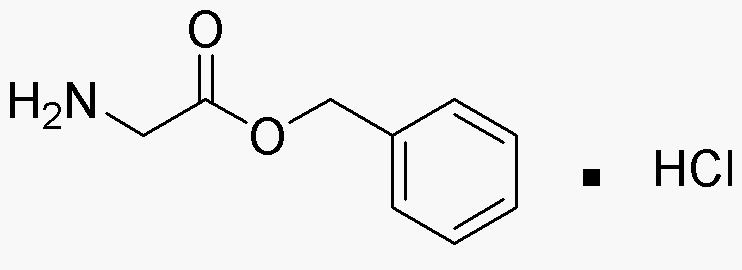Glycine benzyl ester hydrochloride is widely utilized in research focused on:
- Pharmaceutical Development: This compound serves as an important intermediate in the synthesis of various pharmaceuticals, particularly those targeting neurological disorders, enhancing drug efficacy and specificity.
- Peptide Synthesis: It is commonly used in the production of peptides, facilitating the formation of peptide bonds, which is crucial in developing new therapeutic agents.
- Biochemical Research: Researchers utilize it in studies related to amino acid metabolism and protein synthesis, providing insights into cellular processes and disease mechanisms.
- Cosmetic Formulations: The compound is incorporated into skincare products for its moisturizing properties, helping to improve skin hydration and overall texture.
- Food Industry: It can be used as a flavor enhancer or additive, contributing to the development of food products with improved taste profiles.
Información general
Propiedades
Seguridad y normativas
Aplicaciones
Glycine benzyl ester hydrochloride is widely utilized in research focused on:
- Pharmaceutical Development: This compound serves as an important intermediate in the synthesis of various pharmaceuticals, particularly those targeting neurological disorders, enhancing drug efficacy and specificity.
- Peptide Synthesis: It is commonly used in the production of peptides, facilitating the formation of peptide bonds, which is crucial in developing new therapeutic agents.
- Biochemical Research: Researchers utilize it in studies related to amino acid metabolism and protein synthesis, providing insights into cellular processes and disease mechanisms.
- Cosmetic Formulations: The compound is incorporated into skincare products for its moisturizing properties, helping to improve skin hydration and overall texture.
- Food Industry: It can be used as a flavor enhancer or additive, contributing to the development of food products with improved taste profiles.
Documentos
Hojas de datos de seguridad (HDS)
La SDS proporciona información de seguridad completa sobre la manipulación, el almacenamiento y la eliminación del producto.
Especificación del producto (PS)
La PS proporciona un desglose completo de las propiedades del producto, incluida la composición química, el estado físico, la pureza y los requisitos de almacenamiento. También detalla los rangos de calidad aceptables y las aplicaciones previstas del producto.
Certificados de análisis (COA)
Busque certificados de análisis (COA) ingresando el número de lote del producto. Los números de lote y de partida se pueden encontrar en la etiqueta de un producto después de las palabras "Lote" o "Lote".
Número de catálogo
Número de lote/lote
Certificados de origen (COO)
Este certificado de origen confirma el país en el que se fabricó el producto y también detalla los materiales y componentes utilizados en él y si se deriva de fuentes naturales, sintéticas u otras fuentes específicas. Este certificado puede ser necesario para cumplir con las normativas aduaneras, comerciales y regulatorias.
Número de catálogo
Número de lote/lote
Hojas de datos de seguridad (HDS)
La SDS proporciona información de seguridad completa sobre la manipulación, el almacenamiento y la eliminación del producto.
DownloadEspecificación del producto (PS)
La PS proporciona un desglose completo de las propiedades del producto, incluida la composición química, el estado físico, la pureza y los requisitos de almacenamiento. También detalla los rangos de calidad aceptables y las aplicaciones previstas del producto.
DownloadCertificados de análisis (COA)
Busque certificados de análisis (COA) ingresando el número de lote del producto. Los números de lote y de partida se pueden encontrar en la etiqueta de un producto después de las palabras "Lote" o "Lote".
Número de catálogo
Número de lote/lote
Certificados de origen (COO)
Este certificado de origen confirma el país en el que se fabricó el producto y también detalla los materiales y componentes utilizados en él y si se deriva de fuentes naturales, sintéticas u otras fuentes específicas. Este certificado puede ser necesario para cumplir con las normativas aduaneras, comerciales y regulatorias.

